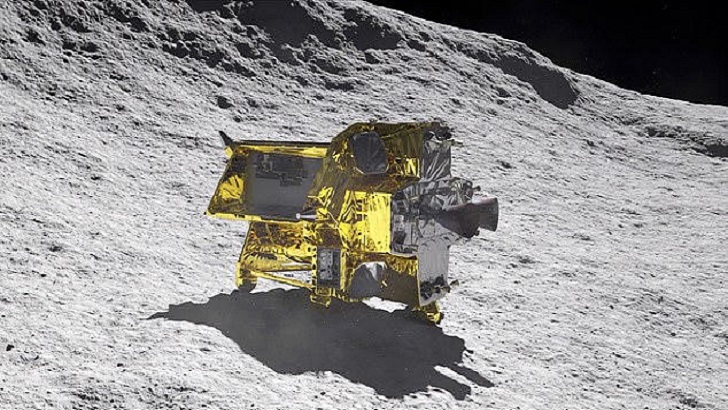Japan recently marked a milestone by successfully landing its Smart Lander for Investigating Moon (SLIM) on the lunar surface. This achievement made Japan the fifth nation to complete a soft landing on the Moon, a notable feat shared with the U.S., Soviet Union, China, and India. However, this mission, initially celebrated for its precision, now faces an unexpected hurdle: SLIM’s solar power system isn’t working as intended, casting uncertainty on its operations.
Solar Power Issues Jeopardize Mission Duration
SLIM’s solar cells were expected to recharge its battery system upon landing. Instead, engineers discovered that the solar cells were not producing electricity. Without functional solar cells, the lander relies solely on its batteries, which have a limited life. Engineers are currently prioritizing power-intensive activities, pulling down images, and collecting essential data to maximize the information retrieved before the batteries deplete.
While investigating possible causes, the Japan Aerospace Exploration Agency (JAXA) remains cautious. Officials have chosen not to abandon hope entirely, as there’s a slim chance the solar cells might be reactivated as the Sun’s angle shifts over time on the lunar surface. Until then, engineers continue retrieving critical telemetry from SLIM, ensuring that its landing success holds valuable insights for future lunar missions.

Japan Moon Landing Tests New Technologies for Precision
The Japan moon landing mission aimed to showcase advanced precision navigation technology that could bring a lander within 100 meters of its intended target. SLIM’s onboard computer used crater mapping and rapid image processing to avoid hazards during descent, enabling it to reach the targeted Shioli Crater area. This success could be pivotal for future missions that need to land in specific lunar regions.
SLIM began its descent from approximately 15 kilometers above the Moon’s surface, navigating autonomously to touch down just after 15:20 GMT. JAXA’s Vice President Hitoshi Kuninaka confirmed early signs of success in SLIM’s pinpoint navigation capabilities, crediting the accuracy to innovations in the lander’s onboard systems. Kuninaka mentioned that further analysis would confirm the exact landing precision within the next month, solidifying Japan’s reputation as a leader in lunar navigation technology.
Lunar Environment Adds Challenges to SLIM’s Mission Lifespan
Although SLIM landed in sunlight near the equatorial Shioli Crater, lunar conditions can become increasingly harsh as the month progresses. Nighttime temperatures plummet to levels that often damage electronic components beyond repair. As lunar night approaches, SLIM’s lack of solar power may hinder its ability to maintain operational temperatures, heightening the risk of system failures when darkness sets in.
JAXA engineers have prioritized gathering as much data as possible before the extreme cold halts SLIM’s functions. They are particularly focused on analyzing the effectiveness of SLIM’s landing software, a key mission objective. If successful, this software could be crucial in Japan’s future lunar exploration missions and contribute to ongoing international projects.
Japan’s Role in the New Lunar Exploration Era
This mission’s success marks another step forward in Japan’s space exploration initiatives. JAXA’s experience with asteroid landings, such as the Hayabusa missions, has laid the groundwork for lunar exploration, with SLIM being another proud accomplishment. Japan’s expertise in this arena will likely support its collaboration with NASA’s Artemis program, aimed at returning humans to the Moon after decades.
The mission underscores Japan’s growing influence in space exploration, while SLIM’s future remains uncertain due to its power issues. JAXA’s achievement not only showcases its technological progress but also highlights the strategic collaborations Japan is forming to push the boundaries of lunar science.

Global Implications and Future Prospects
The success of Japan’s moon landing mission resonates within the broader context of global space exploration. With countries like India and private companies advancing lunar projects, knowledge-sharing across nations becomes vital. The insights gained from SLIM’s navigation technologies could improve the reliability of future missions, contributing to the growing understanding of the Moon’s environment and the challenges it presents.
Global experts are taking note of Japan’s accomplishments. Dr. Simeon Barber from the UK’s Open University and Dr. Emma Gatti from SpaceWatch Global highlighted the importance of Japan’s achievement for the broader space community. As more countries venture into lunar exploration, collaborative advancements will help build robust mission frameworks and pave the way for more sophisticated lunar studies.





